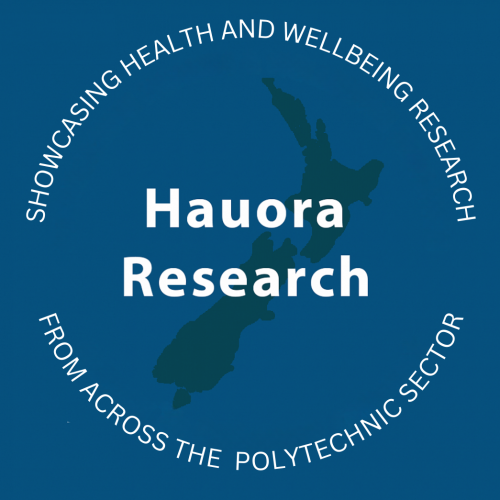
Understanding the health practices of I-Kiribati in New Zealand
Dr Teramira Schutz, WHITIREIA: In the first research of its kind, a new study has investigated the health beliefs and practices of people from the Pacific nation of Kiribati who are living in New Zealand.
“There is a rapidly growing number of I-Kiribati migrating to New Zealand, and a prospect of total migration from Kiribati to host countries like New Zealand because of climate change,” says Whitireia Community Polytechnic Pacific Nursing Tutor, Dr Teramira (Mira) Schutz. “However, I discovered there were no studies examining the health beliefs and practices of I-Kiribati in New Zealand.”
Schutz is I-Kiribati herself. She trained and worked as a registered nurse in Kiribati before moving to New Zealand in 2006. She now works as both a registered nurse and nurse educator here.
“While I worked as a registered nurse in Kiribati, I had the privilege to work alongside traditional healers in the rural islands of the nation, as well as practitioners of western medicine,” she says. “I have always been fascinated to listen to I-Kiribati traditional healers’ karaki, or stories, about how their health practices could heal or treat illnesses, even though these practices have not been scientifically proven or tested.”
Schutz’s late maternal grandmother was a traditional birth attendant, and she passed her traditional healing skills to her daughters.
“They provided traditional gentle pregnancy massage to women who sought their help throughout the nine months of their pregnancies, to help prevent any complications for both the women and their unborn children.”
From Schutz’s observations, I-Kiribati access traditional healing as a first-line treatment in Kiribati, but will seek out western medicine when they have a serious health concern.
As part of her PhD study at Victoria University, Schutz sought to understand the health practices of I-Kiribati immigrants in New Zealand.
“I developed a cultural research framework, called Te Kora, modelled on the Kiribati cultural practice of making string from two coconut husk fibres called binoka,” she says. “Within the framework, I viewed one binoka as the Kiribati health practice and the other binoka as the western health approach.
“My Kiribati language is very important to me, and so in my research, I used Kiribati nuances that will make sense not only to myself as a researcher, but also to I-Kiribati participants of this study and as well as the I-Kiribati population at large. I used these purposefully as a way of contributing to the preservation of our Kiribati language and identity.”
Schutz interviewed 30 first-generation I-Kiribati from the lower North Island and throughout the South Island, recruiting participants using a process called anoiko maroro, which is similar to snowballing.
“I used maroro, or discussion, as the method and karaki, or stories, as the data,” she said. “Participants’ karaki were audio-recorded, transcribed and translated into English, and transcript summaries were sent to each individual participant for verification.”
Analysing the participants’ stories, six key organising ideas emerged: health and illness perceptions; the value of traditional practices; traditional health practices; foods and their products; beauty and wellness; and the use of a western health approach.
“The study revealed that I-Kiribati retained their health heritage, and persistently continued their traditional practices as a way to maintain their health and wellbeing,” says Schutz. “Participants sometimes felt an internal conflict between their traditional practices and western medicine.”
There was a sense that traditional healing methods – such as the use of massage, plant medicines and ritual – were effective, having been passed from generation to generation before western medicine arrived in Kiribati, she says.
“I was interested in how participants integrated their traditional knowledge and skills into their lives in New Zealand.”
She found that participants retained their cultural perspective and practices, but some modified them to fit the New Zealand context.
“In Kiribati, they grind the leaves of certain medicinal plants to make a concentrated juice called te mooi taberanikai, and take a shot of it at set times of the day. Each I-Kiribati family has their own unique recipes, ritual practices and beliefs – but all are used to maintain health, wellbeing and beauty,” she says. “Because the plants don’t grow in New Zealand, I-Kiribati are creative and make their own recipes from the salad greens that are available here, juicing them in a blender and drinking those as a shot instead.”
She found it interesting to find out how I-Kiribati in New Zealand practice health to maintain their health and wellness, how they perceived health and illness, and when they would seek out western health care.
Schutz noted participants accommodated a variety of different health practices including western, Māori and other Pacific health practices, alongside their traditional techniques. Generally, with minor ailments, I-Kiribati felt able to treat them with their own traditional healing methods.
As part of her study, Schutz developed the Te Kuan Model of Te Mauri for I-Kiribati immigrants in New Zealand.
“This model transfers health beliefs and practices from Kiribati into a New Zealand context, and explains how I-Kiribati navigate between health practices to establish a balance between empirical-cultural knowledge, lived experiences and available resources to meet their physical, mental, spiritual, social, environmental, and cultural needs.”
The model acknowledges Kiribati traditional health beliefs and practices, and Schutz hopes it can improve cultural understanding, cultural sensitivity and cultural protection of I-Kiribati among health professionals.
“At the same time, I hope it may contribute to improving access to western health care services for I-Kiribati in New Zealand. There are times when traditional healing methods are appropriate and others when their use can delay access to crucial health care.”
Dr Teramira Christine Schutz is a Registered Nurse whose qualifications include a PhD in Nursing, Master of Nursing, Postgraduate Diploma in Clinical Nursing Practice and Management, and a Bachelor of Nursing. She is a Senior Nursing Lecturer in the Bachelor of Nursing Pacific and the Pacific Strategy Team at Whitireia-Weltec, Te Pūkenga. Contact Teramira Schutz
